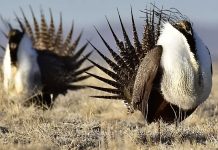SALT LAKE CITY, Utah, Oct. 13, 2023 (Gephardt Daily) — State wildlife officials have shared their latest weapon against the spread of
in Utah waters.
Called the “STD of the Sea” (skiff-transmitted disease) and the evil cousin of the clam, quagga mussels damage boats and water delivery systems while threatening ecosystems by decreasing food sources for fish, the state Division of Wildlife Resources says.
“Sand Hollow State Park recently got a major upgrade in the fight to prevent the spread of aquatic invasive species!” the division announced online Wednesday.
“A new dip tank was installed and is now up and running to help streamline the decontamination process for boaters using the reservoir.”
Sand Hollow’s, in Washington County, is the third dip tank installed across the state, with tanks already in use at Lake Powell and Utah Lake. “We have partnered with Clean Wake LLC to place these tanks which reduce cleaning times down to 5-10 minutes.”
That’s rather than personnel climbing around and under boats to manually spray hot water during inspections and decontaminations, the DWR explains, the dip tank allowing boaters to back their watercraft into the tank for the same effect.
The water in the tanks is heated to 110 degrees, and the filtration and pump system circulates water through the complex intake systems of most boats. “More dip tanks are scheduled for other water bodies across Utah including Flaming Gorge, Pineview and Willard Bay reservoirs.”
For more about the history and threat of quagga mussels https://www.nps.gov/lake/learn/quagga-mussel.htm ,
The division has been working with Clean Works LLC awaiting the development of the dip tanks since 2021. “This new system will be a tremendous asset in our efforts to stop the spread of invasive quagga mussels,” according to the DWR, noting the Lake Powell dip tank was the first attempted in the U.S. Quagga mussels were first detected in the U.S. in Michigan in 1988.






